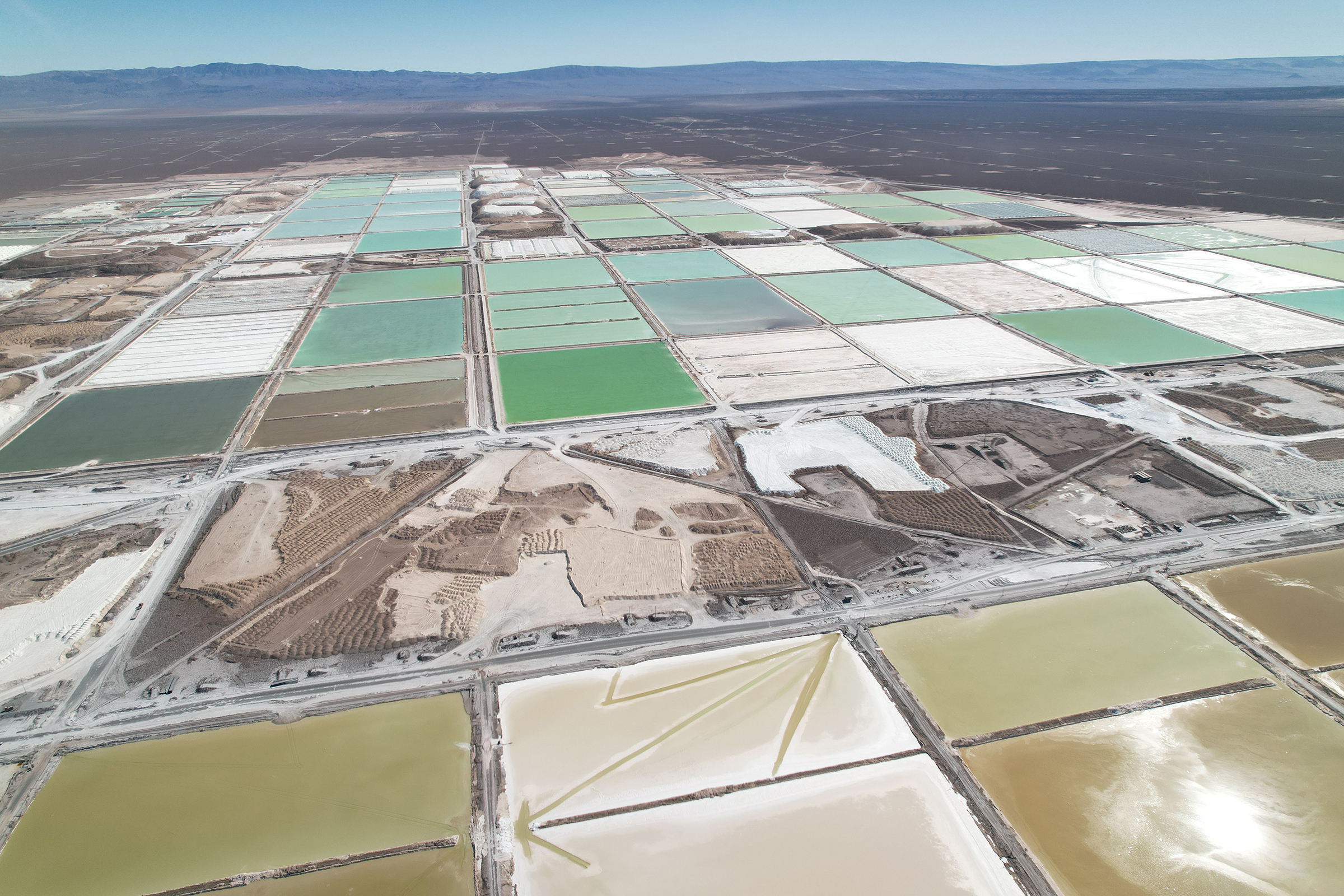The minerals found in an electric-car battery often travel thousands of miles around the world before the vehicles they will be in hit the road. Lithium mined in Chile or Argentina is shipped to China—where three-quarters of the world’s electric-vehicle (EV) batteries are currently made. The sea journey emits considerable amounts of CO2 in the process. Yet, electrifying the transportation -sector—which accounts for more than a third of global CO2 emissions—is key for reaching net-zero emissions by 2050.
[time-brightcove not-tgx=”true”]
Putting more EVs on the roads and renewable energy in our grids will require more minerals such as lithium, nickel, and cobalt to power the batteries they rely on. According to the International Energy Agency (IEA), lithium demand has risen threefold since 2020 and is expected to triple again over the next decade. The overall demand for critical minerals for EVs is expected to grow sixfold by 2040. The question is: Where will they come from?
Currently, the E.U. imports four-fifths of its extracted lithium and 100% of its processed lithium. While most of it is mined in Australia and South America, about three-quarters of the world’s lithium is processed in China. But there’s a growing push to build an EV-battery industry in Europe and North America by recycling lithium-ion batteries.
“[EV] batteries really represent one of the first times that we can truly have a circular economy,” says Alexis Georgeson, government-relations executive at Redwood Materials, the largest lithium-battery recycler in the U.S. In contrast to materials like paper and plastic, the metal atoms of lithium or nickel can be infinitely recycled. “If you take them out of a battery, that nickel atom is still there and you can refine it, purify it, and put it back into a battery, and it’s going to perform just as well if not better,” she says.
Recycling is a question not only of meeting rising demand, but also of building a local supply chain. Amid the trade war with the U.S., China has restricted exports of critical minerals. While President Trump has been championing fossil fuels, he’s also trying to get his hands on more critical minerals, including through a deal this year with Ukraine.
But the benefits of recycling EV batteries extend way beyond national interest. It’s also more sustainable than constantly mining for new minerals. A recent Stanford-led study showed that the current industrial-scale process of recycling EV batteries emits less than half the greenhouse gases and uses only one-fourth the water and energy as mining new minerals, especially in locations with abundant renewable energy.
While the EV market is still fairly new and growing, current models and batteries will need to be retired when they reach the end of their life in the coming decades, making recycling a key strategy to deal with them, says Xi Chen, an assistant professor in energy and environment at the City University of Hong Kong and one of the co-authors of the study.
China, which was an early adopter of electrification, accounts for 80% of global EV battery-recycling capacity. Meanwhile, Europe and North America are still in the early phases of developing battery-recycling markets, which initially require large amounts of investment, experts say.
Recycling involves carefully collecting disposed batteries—which are highly flammable—dismantling and discharging them.
The batteries then go through a shredding process that generates so-called black mass—the shiny, metallic mixture from which metals can be extracted—by using either pyrometallurgy, a heat-based process that practically roasts the batteries, or hydro-metallurgy, which uses chemicals to separate the metals. The current refining processes are still quite rough, and “there’s lots of room to improve and really make the process more efficient,” says Chen.
E.U. policymakers are looking to support the still nascent industry through a new set of regulations mandating producers to recover lithium from 50% of waste batteries by the end of 2027, going up to 80% by the end of 2031. They also establish mandatory minimum levels of recycled content for batteries, including 16% for cobalt and 6% for lithium and nickel.
While many recyclers currently stop at producing black mass, Redwood Materials, which is led by Tesla co-founder JB Straubel, is going further, specializing in cathode active material, which makes up the positive electrode of a battery as well as most of its cost. “We are producing products that can actually go further downstream, back to battery-manufacturers … you cannot send lithium to a gigafactory, they have no use for it,” says Georgeson.
The automotive industry is exploring recycling too. Last year, the German luxury carmaker Porsche launched a pilot to explore how it could recycle its own lithium batteries and produce high-performance and long-lasting battery cells with recycled content, says Jonathan Hoerz, the head of strategy for circular economy at Porsche.
“If we really want to do sustainable electromobility in Europe, we need the recycling part,” he says.

